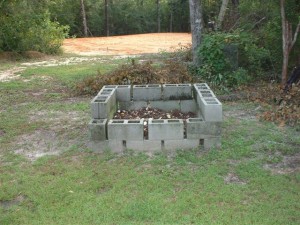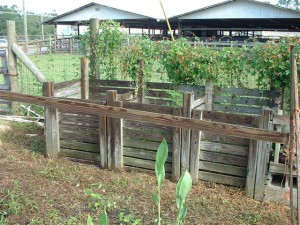Compost is partially decomposed organic matter or anything that was once a living plant. It is the product of controlled decomposition of organic materials by microorganisms. Humus is completely decomposed organic matter.
Green and brown materials with favorable proportions of carbon and nitrogen (C:N) (25:1) offer the microorganisms a “complete meal“. This helps the breakdown of the compost. Greens having high nitrogen and browns having high carbon.
“Green”
- High Nitrogen
- Fast to decompose
- Nitrogen provides the microbes with the raw element of proteins to build their bodies and reproduce.
Examples: manure, kitchen waste, grass clippings, inorganic nitrogen rich fertilizers.
“Brown”
- High Carbon
- Slow to decompose
- Carbon is the energy source for the microbes that help break down the materials.
Examples: leaves, wood chips, straw, sawdust.
Layering in Compost Bin
The general rules for composting: 3 – 4″ layers alternating Green (high nitrogen) and Brown (high carbon) materials. Water each layer as you build it so material is moist not wet, like a wrung sponge. End with a Brown layer on top. Thin layers help prevent anaerobic (smelly) pockets from developing and allows microbes access to both Green and Brown food sources. Do not use meat (eggshells are OK) or dog / cat manure in your compost.
Make sure to filter your composting system because it may not break down all the larger materials, such as corncobs or wood chips.
When you screen your compost, any material larger than your screen size will be removed. The screened particles can be placed back in the compost bin to provide aeration. Additionally, the microbes attached to these pieces will help jump-start the new composting process.
For more information check out this site: Compost Tips for the Home Gardener.
- Vegetable Garden Insect and Disease Management - June 10, 2015
- Insect Problems in the Heat of Summer - May 8, 2015
- Gardening in a Bucket - April 14, 2015


